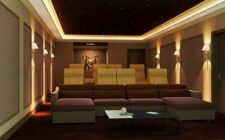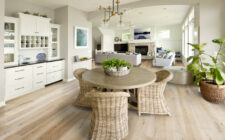ACTIONS
The decisive choice criteria for this project
To choose the material for your terrace, several criteria will be taken into account:
The style of your house: rather traditional, modern, country-style, charming, contemporary …
Is it a terrace as part of a recent construction or a renovation?
Do you plan to expand it later?
All these questions are essential to better understand the project and integrate your terrace. Know that there is no absolute rule, however, everything is a question of taste, and harmony or contrast has qualities. The mixtures of styles are currently very widespread and bring a surprising effect, but very often very aesthetic.
Ask yourself the question of the dimension
The dimensions of the terrace can guide the choice of materials. Over a large area, XXL tiles are easier to install and require fewer joints. The effect is more refined and relaxing.
A terrace for what function?
Do you want the patio to be an integral part of the house being covered to enjoy it all year round, or do you just need an exterior for summer days? This is an important question. In addition, currently, the terrace is aesthetically integrated with a tendency to use the same type of coating inside and outside.
It is also often the place where you receive, think about it by choosing the covering which must be practical and washable easily. If it is installed as an extension of a swimming pool, think about its aesthetic appearance, it must be practical, but also beautiful.
The interview : this is a criterion that comes up often. A terrace must be easy to use and maintain. Tiles, natural stone, concrete … heavy materials require little maintenance compared to wood, for example.
The frost resistance is also a crucial factor. Under the effect of heat and cold, the material of your terrace will inevitably move, it expands or contracts, which has an influence on your choice, but also on the installation.
The combination of several materials : it is not uncommon to combine two materials, for example tiles and wood for a more important decorative effect. Be careful and think carefully about this combination whether it is for the installation or for the aesthetics and the rendering.
The different possible materials
Your choice is based on species that are durable and able to withstand bad weather and temperature variations. Of course, it is always possible to increase its hold over time with special products such as a suitable oil.
You should know that the wood is smooth, therefore slippery, when it rains or when it is covered with dead leaves. In addition, wood is a living material. To limit the risk of falling and prevent the wood from warping, it is preferable to choose a hard species.
Teak is a wood that is great for decks, but is expensive.
Species like ipe or bangkiraï are harder and heavier woods. The second, however, tends to crack on the surface if it is too exposed to the sun. Avoid it on a terrace, facing south. Otherwise, they are both durable. The ipe retracts as it dries, this phenomenon can lead to the appearance of significant cracks between the wet season and summer.




